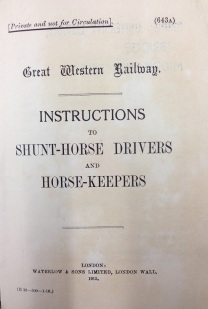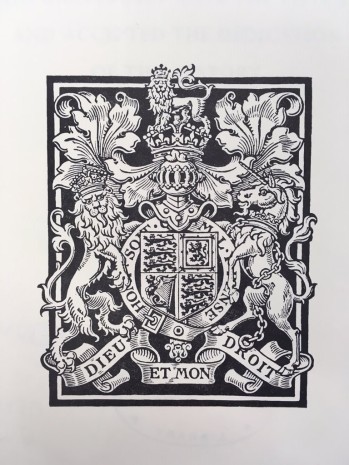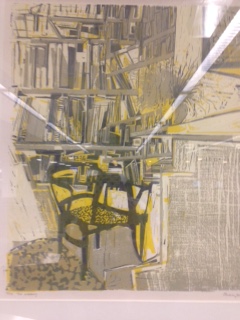 Amongst our collections on transport history are numerous books of rules and regulations for railway staff. We have a range from different railway companies across the nineteenth and twentieth centuries, and the British Railway rule book of 1950 which pulled these together and superseded the regulations set out by individual companies.
Amongst our collections on transport history are numerous books of rules and regulations for railway staff. We have a range from different railway companies across the nineteenth and twentieth centuries, and the British Railway rule book of 1950 which pulled these together and superseded the regulations set out by individual companies.
The different editions of the same company’s rules show changes over time, and some volumes are annotated or have extra sections pasted in, showing how an individual copy of the rules was used and updated by its owner. It’s also interesting to compare the rules across companies; differences may reflect differences in the work, or organization, of particular companies.
 Regulations tell us a great deal about life on the railway, such as the type of work that was done; the equipment that was used to do it; the duties and responsibilities of different types of staff; the difficulties caused by bad weather; the dangers staff and passengers could be exposed to if things went wrong; the necessity of having synchronized time across the railway network.
Regulations tell us a great deal about life on the railway, such as the type of work that was done; the equipment that was used to do it; the duties and responsibilities of different types of staff; the difficulties caused by bad weather; the dangers staff and passengers could be exposed to if things went wrong; the necessity of having synchronized time across the railway network.
Here is a selection of excerpts from various rule books.

Many editions of these books were designed for issue to individual staff members, and contained a declaration to be signed showing that the worker understood, and agreed to abide by, the rules therein. Here is an agreement from the front of the Eastern Counties Railway rules and regulations of 1857, signed by John Mason. He has incorrectly had his name entered in the space for his job title.
In addition to these general-purpose books, we hold a few more specialized examples, including instructions from Great Western Railway to its staff who worked with horses. There are standard rules such as the requirements for staff to be on duty when rostered and to maintain their uniform in a good condition, and in place of instructions for maintaining the engines or signals in good working order, there is the insistence on proper cleaning and drying of harness and collars.
The welfare of the horses themselves was of course paramount, and there are detailed instructions on the care of the animals; the need to report illness, lameness, or unsatisfactory feed; the need to ensure good working conditions by limiting the amount one horse should pull, and by covering slippery ground with gravel; the instruction that horses at work must be kept “in a cool and quiet state”.
In addition this collection holds regulations concerning the telegraph system, the traffic around a shipping port, and other aspects of railway life.

 Sir Walter Raleigh (c.1552 – 1618) is well-known for his connections with the court of Queen Elizabeth I and for his voyages of exploration, and is popularly credited with introducing potatoes and tobacco to Britain. He was, less famously, a scholar and poet. In 1813 his poems were published with a critical introduction; Special Collections at Brunel holds a second edition of this work, which was transferred to Brunel from the Shakespeare Authorship Trust.
Sir Walter Raleigh (c.1552 – 1618) is well-known for his connections with the court of Queen Elizabeth I and for his voyages of exploration, and is popularly credited with introducing potatoes and tobacco to Britain. He was, less famously, a scholar and poet. In 1813 his poems were published with a critical introduction; Special Collections at Brunel holds a second edition of this work, which was transferred to Brunel from the Shakespeare Authorship Trust. gold-tooled leather binding, with more modern repairs, together with an edition of the poems of Robert Southwell which was printed separately in 1817. The binding would have been done on the orders of an early owner of the works, and may reflect his or her taste and budget as well as current fashions.
gold-tooled leather binding, with more modern repairs, together with an edition of the poems of Robert Southwell which was printed separately in 1817. The binding would have been done on the orders of an early owner of the works, and may reflect his or her taste and budget as well as current fashions.







